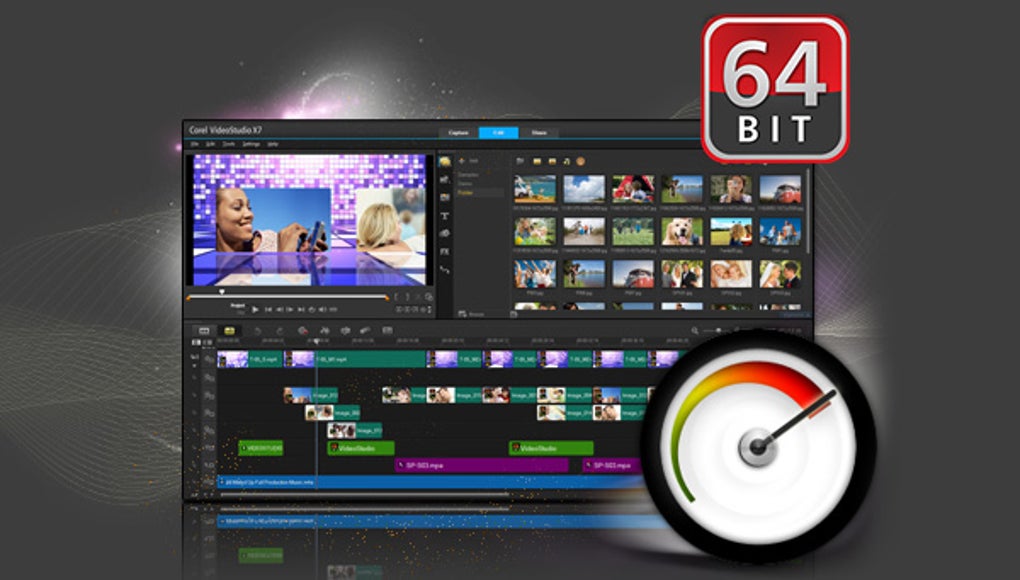

- EDIT CONTRAST IN COREL VIDEOSTUDIO ULTIMATE X10 DRIVER
- EDIT CONTRAST IN COREL VIDEOSTUDIO ULTIMATE X10 PC
- EDIT CONTRAST IN COREL VIDEOSTUDIO ULTIMATE X10 WINDOWS
You'll see my name there as "ronzie".įinally there is one "gotcha" in monitor vs. If the dual monitor approach appeals to you search that forum for recommendations.
EDIT CONTRAST IN COREL VIDEOSTUDIO ULTIMATE X10 PC
For general PC work leave a less expensive type on so your back light is conserved on your photo monitor. You might consider for serious work a second monitor just for photo editing that you can calibrate. The best type of flat panel monitors for photo editing are S-IPS or S-PVA which have a wider angle of view for consistent color viewing. If you do get a print profile to use as soft proof make the print comparisons in soft-proof mode, typically using perceptual rendering.īrowse that forum for color management threads.
EDIT CONTRAST IN COREL VIDEOSTUDIO ULTIMATE X10 DRIVER
Adjust in your video driver or monitor saturation for color intensity (usually called color in the monitor) and hue (phase) on the monitor so the prominent colors match the color test print to your satisfaction. You can then adjust the individual channels in your monitor and display driver to null out any color and match the color of the print paper (white chip). Now bring up first the gray scale using PSPP on your monitor and if necessary adjust for fine tuning your video card master channel or monitor controls to get the best luminance match to your print. When you get the prints back view them in a typical viewing light that your print viewers might use.

These test targets have already been edited to produce standard print quality. Do NOT make any color adjustments yet in PSPP and instruct the lab not to do any kind of enhancements. Now bring up these images in PSPP for sizing only and save them in the appropriate size, resolution, and format for sending to your lab to get hard copy test prints for comparison. In addition, get a suitable gray scale image from this page. I use the one with the four people in the bottom row and the gray scale on the right side. This site has some useful color test images: Here is a forum you can reference searching for print matching as a subject: If you are serious about monitor profiling get a device to accomplish this.

If you then need to you can touch up the final adjustment for color null with the video driver curves in Win. Get the best black and white chips luminance first and then color balance (R,G,B) available with the monitor controls. Then in PSPP run through the monitor calibration process first. So first go into your PC display card settings and set to linear or default the response curves for master and all color curves including gamma, brightness etc. Now, I am assuming you do not have a monitor calibration system. One thing you do not want to is have your video card settings fight your monitor card setting. Also, be sure ambient light is minimal in falling on the monitor face. Too much backlight illumination frequently results in bad monitor display linearity from black to white. While you are in your monitor settings turn off any auto dynamic contrast feature that causes contrast to vary with subject matter.

You'll find in your monitor specs the ft/cd amount at 100% or maximum illumination. To get this set the Economode or whatever backlight life or efficiency setting to whatever percent results in 125 ft.cd. The correct illumination should result in about 125 ft/cd with maximum white transparency of a white chip on the screen. If your monitor is an LCD type with florescent or LED back lighting they typically out of the box have their back light illumination set to 100% for 300 ft/cd so they look good in a brightly lighted store environment.
EDIT CONTRAST IN COREL VIDEOSTUDIO ULTIMATE X10 WINDOWS
You also need to insure that in Windows the correct monitor profile is being used so it shows up as available in PSPP CM settings. Second, you need to be sure your monitor is calibrated and profiled correctly. These may come close to the soft proof you need.Īlso read the links there for color management overview. Some lab profiles are available on this site:īrowse the states on the left of the page looking for the lab processor manufacturer and model number, then the papers used. If not find out what processor model they use and what papers. See if you can obtain print profiles from your lab for their processor and papers used. Is your monitor calibrated and profiled? Have you entered the monitor profile in PSPP's color management setup? First you need to understand that PSPPX3 does not control printer color and density, just color management for your monitor and soft proofing.


 0 kommentar(er)
0 kommentar(er)
